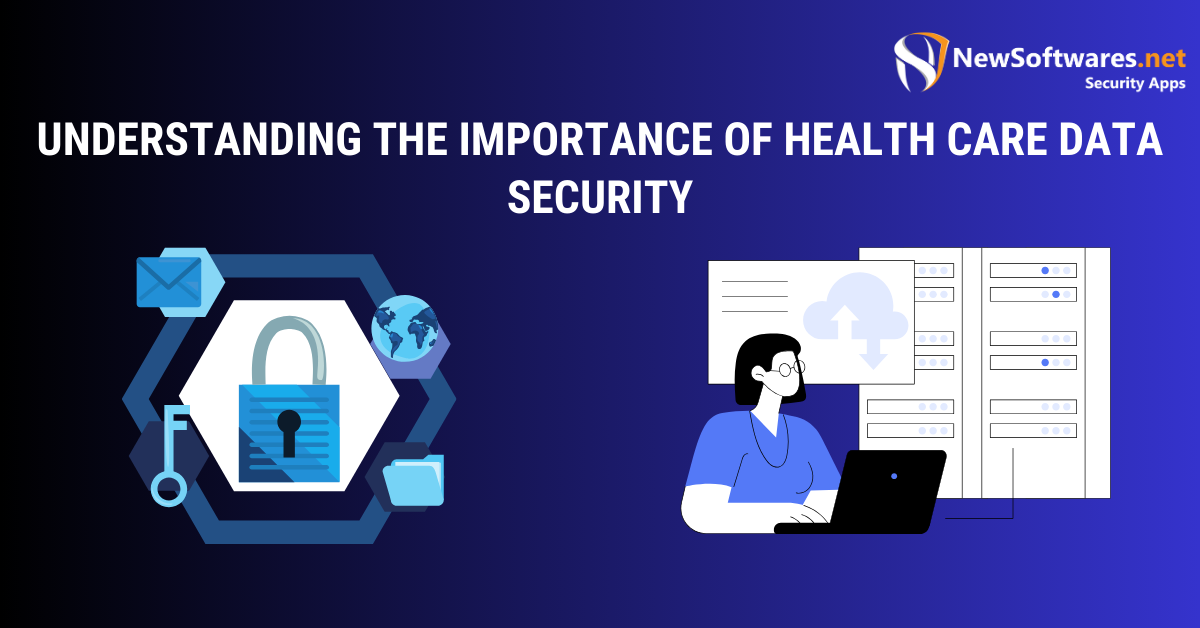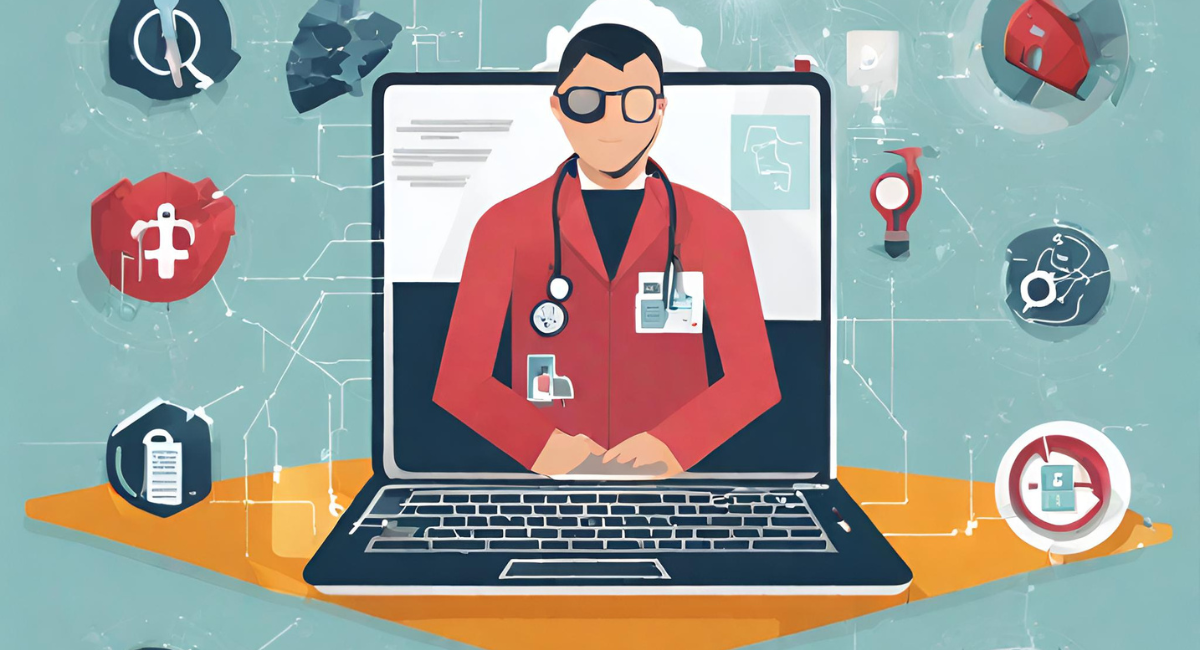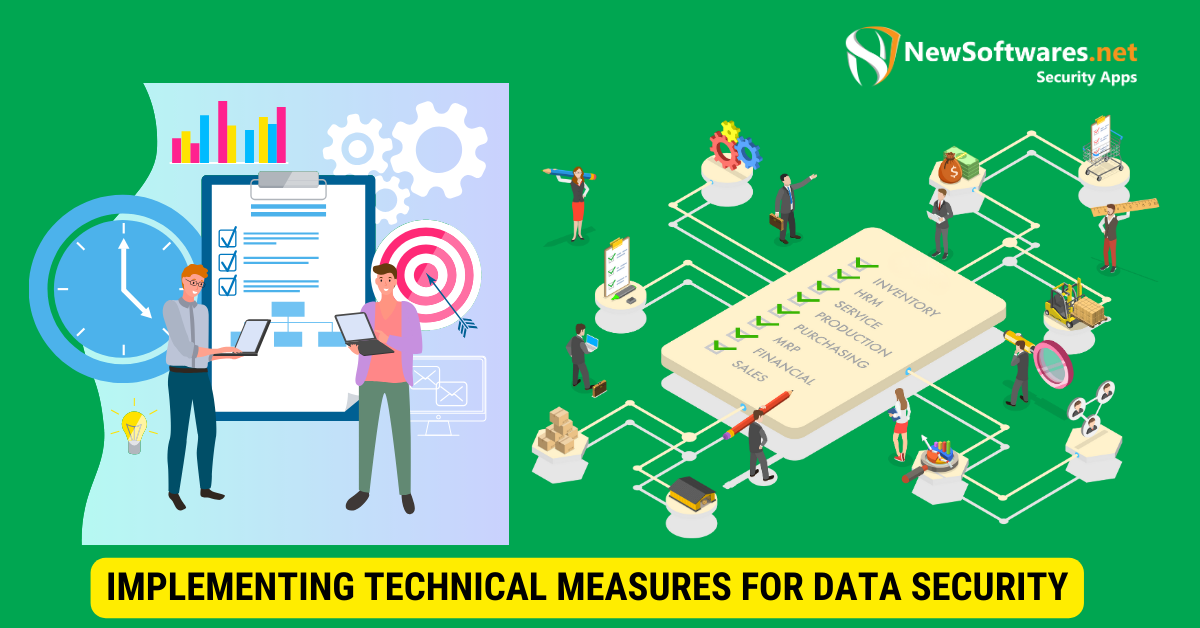To ensure the technical security of healthcare data, organizations should follow the principles of confidentiality, integrity, and availability. This involves implementing robust measures such as encryption, firewalls, intrusion detection systems, regular audits, and compliance with regulations like HIPAA.
In today’s digital age, protecting healthcare data has become increasingly crucial. With the growing reliance on technology and the widespread use of electronic medical records, ensuring the security of sensitive patient information is paramount. I will provide an in-depth understanding of providing technical security to healthcare data and safeguarding it from potential risks and threats.
Understanding the Importance of Health Care Data Security

Healthcare data plays a pivotal role in modern medicine. It includes a wide range of information, such as patient demographics, medical histories, test results, diagnoses, and treatment plans. This data is vital for providing high-quality patient care, conducting medical research, and ensuring efficient health care delivery.
However, digitalizing health care data brings various cybersecurity risks and threats. Unauthorized access, data breaches, data loss, and identity theft are just a rare examples of the potential harm that can occur if proper security measures are not in place.
The Role of Health Care Data in Modern Medicine
Healthcare data serves as the backbone of modern medical practices. It enables medical professionals to make informed decisions, offer personalized treatments, and improve patient outcomes. Researchers can identify patterns, discover new treatments, and enhance medical knowledge by analyzing large datasets.
Moreover, healthcare data is fundamental for developing and implementing innovative technologies like telemedicine, wearable devices, and artificial intelligence. These advancements revolutionize health care by enhancing patient convenience, improving access to care, and facilitating early disease detection.
For example, telemedicine allows patients to Seeking medical advice through remote consultations has become increasingly popular, obviating the necessity for in-person appointments and consequently minimizing the chance of encountering contagious illnesses. Wearable gadgets, including fitness trackers and smartwatches, gather up-to-the-minute health information, empowering individuals to oversee their health and implement preemptive lifestyle adjustments. Artificial intelligence algorithms have the capacity to scrutinize extensive healthcare data to discern trends and forecast disease outcomes, thereby enhancing the precision of diagnoses and customizing treatment strategies.
Potential Risks and Threats to Health Care Data

Understanding healthcare data’s potential risks and threats is crucial for devising effective security strategies. Hackers and cybercriminals constantly target healthcare organizations due to the significant value of medical records in the black market. Furthermore, insider threats, human error, and system vulnerabilities pose additional risks.
Healthcare organizations must guard against various attacks, such as malware, phishing, ransomware, and social engineering. These attacks can result in illegal access to patient data, manipulation, or even loss of data.
Healthcare organizations employ robust security measures to mitigate these risks, including encryption, firewalls, intrusion detection systems, and employee training programs. Consistent security audits and vulnerability assessments are conducted to recognize and address any weaknesses in the system.
Additionally, healthcare data security regulations, such as the Health Assurance Portability and Accountability Act (HIPAA) in the United States, impose strict requirements on healthcare providers and organizations to protect patient data. Failure to obey with these rules can result in severe penalties and reputational damage.
Furthermore, healthcare organizations collaborate with cybersecurity experts and participate in cutting-edge technologies to stay ahead of evolving threats. Continuous monitoring, threat intelligence sharing, and incident response plans are essential to a comprehensive healthcare data security strategy.
In conclusion, the importance of healthcare data security cannot be overstated. The confidentiality, integrity, and availability of patient data are critical for delivering quality care, advancing medical research, and ensuring trust in the healthcare system. By understanding the role of healthcare data in modern medicine and the potential risks it faces, healthcare organizations can implement robust security measures to protect this valuable asset.
Fundamental Principles of Data Security
Confidentiality, integrity, and availability form the foundation of data security. These principles ensure that healthcare data remains protected, accurate, and accessible when needed.
Confidentiality confirms that only authorized individuals can access sensitive healthcare data. Strong access controls, encryption, and regular audits are essential to maintaining confidentiality. Additionally, organizations should consider implementing multi-factor authentication to enhance data security further. The risk of unauthorized entree is significantly reduced by requiring users to deliver multiple pieces of evidence to confirm their identity, such as a password and a fingerprint scan.
Furthermore, staff training and awareness programs are crucial in stopping data breaches caused by human error or negligence. Regular training sessions can educate employees about the position of confidentiality and the potential consequences of mishandling sensitive data. This can include recognizing phishing attempts, securely handling physical documents, and understanding the proper use of encryption tools.
Integrity refers to the accurateness and reliability of healthcare data. It involves implementing data validation, checksums, and backup systems to detect and prevent unauthorized modifications or data corruption. Data validation techniques, such as checksums or hash functions, can verify data integrity by comparing the calculated value against the original value. If any discrepancies are detected, it indicates that the data may have been tampered with.
Moreover, organizations should establish robust backup systems to ensure data integrity. Regularly creating backups of healthcare data and storing them in secure off-site locations can protect against data loss due to hardware failures, normal disasters, or malicious activities. Implementing a backup rotation strategy, such as the Grandfather-Father-Son method, can provide multiple recovery points and minimize the risk of data loss.
Availability ensures that healthcare data is accessible to authorized individuals when needed. Implementing robust backup systems, disaster recovery plans, and redundant infrastructure can minimize downtime and ensure uninterrupted access to critical patient information. Organizations should consider implementing failover systems, which automatically switch to a backup server or network in case of a primary system failure. This can help maintain seamless access to healthcare data and prevent disruptions in patient care.
The Role of Encryption in Data Security
Encryption is an indispensable tool in protecting healthcare data from unauthorized access. It involves converting sensitive information into an unreadable form, which can only be decrypted using an encryption key. Encryption should be applied to data at rest, such as stored on servers or in databases, as well as during data transmission between systems.
Many encryption algorithms, such as Advanced Encryption Standard (AES), ensure the confidentiality and integrity of healthcare data. AES, a symmetric encryption algorithm, is widely adopted in the healthcare industry due to its robust security features. It provides high protection against unauthorized access and is resistant to cryptographic attacks.
Encryption should be accompanied by appropriate key management practices to safeguard the encryption keys. Key management involves securely generating, storing, and distributing encryption keys to authorized individuals. Organizations should consider using hardware security modules (HSMs) to protect encryption keys from theft or unauthorized access. HSMs are tamper-resistant devices that provide secure key storage and cryptographic operations, ensuring the confidentiality and integrity of encryption keys.
In conclusion, the fundamental principles of data security, including confidentiality, integrity, and availability, are crucial in protecting healthcare data. By implementing strong access controls, encryption, regular audits, and robust backup systems, organizations can ensure the confidentiality, accuracy, and accessibility of sensitive patient information. Encryption and appropriate key management practices are vital in safeguarding healthcare data from unauthorized access.
Implementing Technical Measures for Data Security

Healthcare organizations must implement robust technical measures to safeguard their data from exterior and internal threats.
Firewalls and Network Security
Firewalls act as a first line of defense, monitoring and controlling network traffic flow. They can prevent unauthorized access to sensitive healthcare data by blocking suspicious or malicious connections. Regular updates, configuration reviews, and traffic monitoring can enhance the effectiveness of firewalls.
Additionally, utilizing secure network architecture, such as virtual private networks (VPNs), can ensure the confidentiality and integrity of data transmitted over public networks.
Intrusion Detection and Prevention Systems
Intrusion detection and prevention systems (IDPS) monitor network and system activity to detect and respond to potential security breaches. They analyze network traffic, identify suspicious patterns or behavior, and issue alerts or take immediate action to prevent unauthorized access.
Implementing IDPS, combined with regular vulnerability assessments and penetration testing, can bolster the security posture of healthcare organizations and mitigate potential risks.
Securing Data in Transit and at Rest
Data security protects healthcare data during transmission and storage on physical or digital media.
Secure Data Transmission Techniques
Secure data transmission techniques encrypt data during transmission over networks, such as Secure Sockets Layer (SSL) or Transport Layer Security (TLS). Utilizing these protocols ensures that sensitive healthcare data remains confidential and cannot be intercepted or tampered with during transit.
Strategies for Secure Data Storage
Secure data storage involves implementing measures to protect healthcare data as it resides on servers, databases, or other storage media. These measures may include access controls, encryption, regular backups, and secure physical storage facilities.
Furthermore, considering cloud storage services requires due diligence to ensure that providers maintain stringent security measures and adhere to applicable regulations.
Regular Audits and Compliance with Regulations
Regular security audits and compliance with regulations are vital to maintaining the ongoing security of healthcare data.
Importance of Regular Security Audits
Regular security audits allow healthcare organizations to identify vulnerabilities, assess risks, and validate the effectiveness of security controls. These audits help organizations stay proactive in mitigating potential threats and ensure ongoing compliance with security standards.
Adherence to Health Care Data Security Regulations
Healthcare organizations must comply with various regulations and standards, such as the Health Insurance Portability and Accountability Act (HIPAA) in the United States. Adhering to these regulations helps protect patient privacy, ensure data security, and avoid potential legal and financial penalties.
Key Takeaways
- Healthcare data is paramount to modern medicine, facilitating informed decisions, personalized treatments, and advanced research.
- Risks to healthcare data include cyberattacks like malware and phishing, system vulnerabilities, and human errors, making robust security measures essential.
- Confidentiality, integrity, and availability are the three foundational principles of healthcare data security.
- Encryption, especially using algorithms like AES, plays a pivotal role in safeguarding data, and key management practices should accompany its implementation.
- Technical measures like firewalls, intrusion detection systems, secure data transmission techniques, and regular audits enhance the security posture of healthcare organizations.
FAQs
Why is healthcare data security essential in today’s digital age?
Healthcare data security is vital because of the increasing reliance on technology, the widespread use of electronic medical records, and the potential risks of unauthorized access, data breaches, and identity theft.
What are the fundamental principles of data security?
The core principles are confidentiality (ensuring only authorized access), integrity (maintaining data accuracy and preventing unauthorized changes), and availability (ensuring data is accessible when needed).
How does encryption play a role in healthcare data security?
Encryption converts sensitive data into an illegible form, ensuring its confidentiality and integrity when stored and during transmission.
Why are regular security audits crucial?
Security audits allow organizations to identify vulnerabilities, assess risks, and validate the effectiveness of their security controls, ensuring proactive threat mitigation.
What regulations are critical for healthcare data security?
Regulations such as the Health Insurance Portability and Accountability Act (HIPAA) in the U.S. impose stringent data security requirements on healthcare providers and organizations.
Conclusion
In conclusion, providing technical security to healthcare data is paramount in today’s digital landscape. Understanding the role of healthcare data, potential risks and threats, and fundamental principles of data security is essential for implementing effective security measures. By following best practices, utilizing encryption, implementing robust technical measures, and ensuring compliance with regulations, healthcare organizations can safeguard sensitive data and ensure the delivery of high-quality patient care.
